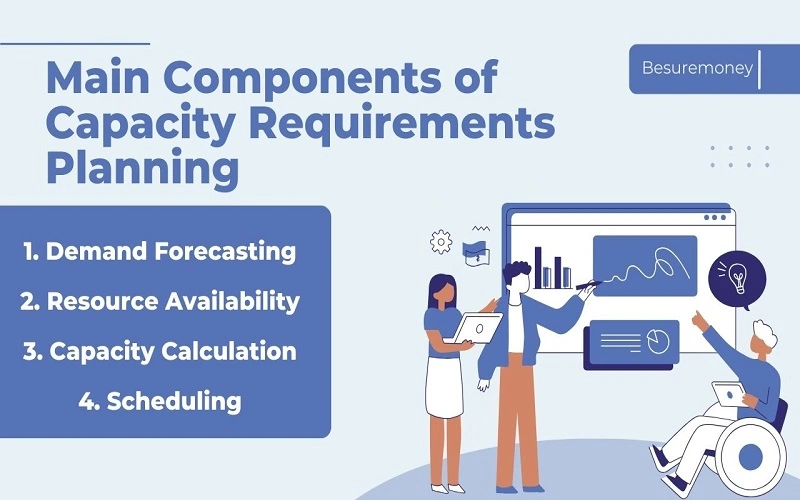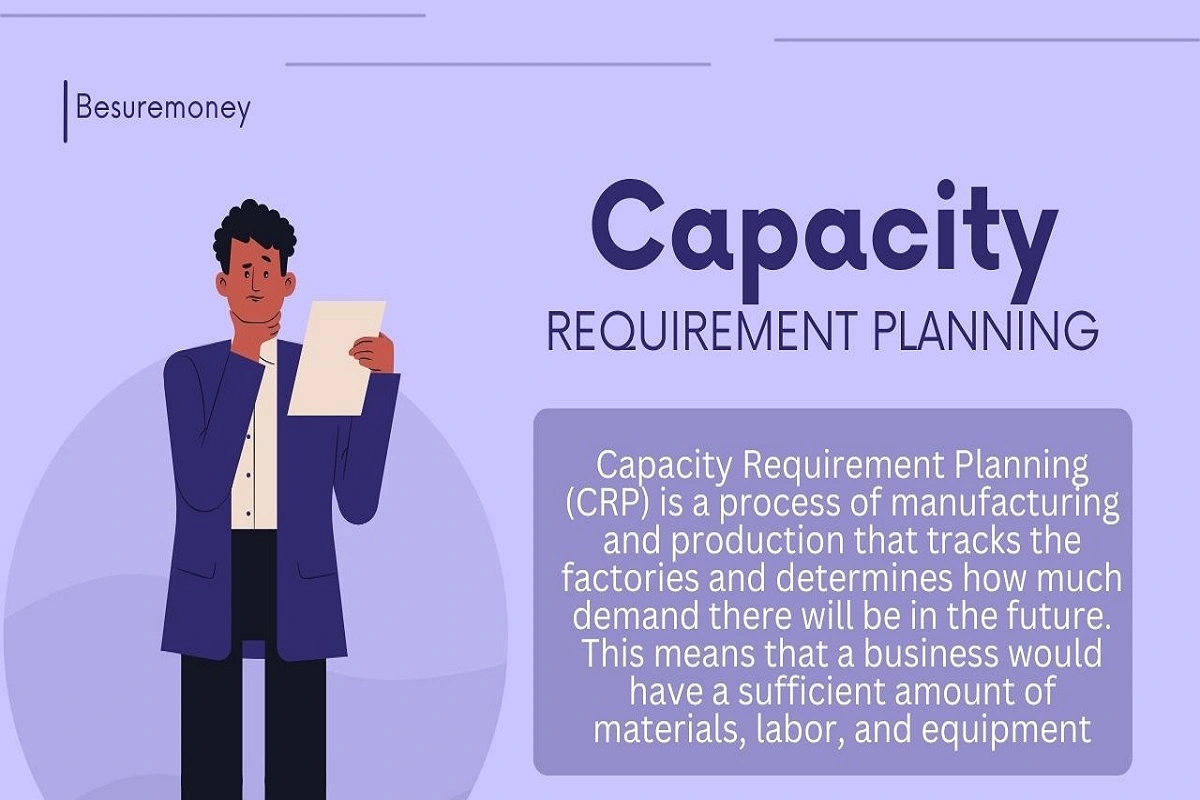This blog post will explain capacity requirement planning (CRP), why it is important, and how businesses can effectively implement your business. By the end, you will understand how to use CRP to improve efficiency and support business growth.
What is capacity requirement planning (CRP)?
Capacity Requirement Planning (CRP) is a process of manufacturing and production that tracks the factories and determines how much demand there will be in the future. This means that a business would have a sufficient amount of materials, labor, and equipment.
History and Evolution:
CRP has evolved when technology advanced to enable businesses to operate more efficiently with their business resources and production processes.
What is the importance of Capacity requirement planning?
CRP is important because it helps businesses avoid overproduction or shortages. Companies can increase productivity, lower costs and serve customer needs with proper capacity planning.
What are the main components of Capacity Requirement Planning?

There are four main components of CRP:
Demand Forecasting:
Accurately predicting future customer demand is one of the most important parts of CRP. Stock control methods involve the process of estimating how much of products will be needed in the future. Using factors like past sales data, Market Trends, etc. The most important aspect of CRP is to have accurate demand forecasting.
Resource Availability:
This includes the detailed knowledge of what resources are available with the business that can be put to use for CRP. Such as resource availability in terms of ‘Materials’. machine capacity, human resources, etc. Knowing what supplies are available ahead of time helps with planning and identifying where shortages may arise.
Capacity calculation:
Post the forecasted demand and resource availability, businesses are required to calculate what capacity is going to be required to meet the expected demand.
Scheduling:
In the case of CRP, create a detailed production schedule. All resources are being used effectively and production is going smoothly. This ensures that production timelines are synchronized with customer needs and that products can be used exactly when required.
What are the steps in capacity requirement planning?
1. Identifying requirements:
In CRP, identify the types and amounts of resources that will be needed to satisfy future demand. This will typically involve a look at the consumption plan, which outlines what needs to be built to satisfy demand based on said forecast and therefore predict material, manpower, and machine requirements.
2. Determining Current Capacity:
The next step for businesses is to know the measure of capacity they are operating at. That is, to consider how much production can be obtained given the resources they have (to convince someone to take a loan).
3. Gap Analysis:
Businesses conduct a gap analysis to point spaces in the current capacity and where it needs to be set for future demand. This makes it easier to identify the places where more resources or changes may be needed.
4. Creating a plan:
Based on the gap analysis, businesses can now create their plan to address any shortfalls in capacity. This could mean buying more materials, hiring extra man-hours, or investing in new machines.
5. Implementation and Monitoring:
The least is to implement the capacity plan and keep monitoring its impact. Continuing to monitor the status of your plan will ensure it is functioning as planned, and can provide data for modification should things not be performing as they ought.
What are the tools and techniques for effective CRP?
Software Solutions: Popular CRP software is going to be used to do the planning.
Analytical methods: Use linear programming, simulation, and queuing theory to analyze capacity requirements.
Key Metrics: Monitor the vital statistics to gauge how your capacity planning pays off.
What are the challenges in CRP?

Common Challenges:
Businesses often challenges in the execution of CRP. One of the biggest reasons is inaccurate data which results in poor forecasting and planning. Variability in demand is another issue that generates complexities for capacity planning.
Solutions:
To address these challenges, companies can improve their collection of data so that they find credible planning assumptions. Flexible planning, which enables the capacity adjustments to be made speedily as demand fluctuates is another critical requirement. It is important to keep all this on track by updating the capacity plan.
Some Case Studies and Examples:
Case Study 1:
The use of CRP by a company to increase production efficiency.
Case Study 2:
A global company struggling with CRP overcame it by converting data into a planning tool.
Lessons learned:
There are a few important lessons you can draw from these examples: the data has to be accurate, preparation is key and so is having the right tool for the job.
Future Trends in Capacity Requirement Planning:
Innovation: Emerging technologies are increasing CRP efficiency and accuracy.
Industry Trends: Automation and AI trends in capacity planning.
Future Outlook: CRP will keep growing and transforming helping enterprises to become more efficient while meeting customer requirements in an even better way.
Conclusion:
Capacity requirement planning is a method of scheduling work based on the capacity of vendors and in-house production facilities. Understanding and implementing CRP can improve efficiency, lower costs, and aid in maintaining day-to-day operations. Get started with CRP practices to experience the results in your business.
FAQs:
Q1. What is MRP and CRP?
Ans: MRP (Material Requirements Planning) and CRP (Capacity Requirements Planning) are integral to manufacturing and production planning.
Q2. What is the formula for capacity planning?
Ans: The formula for capacity planning is: Required Capacity = Total Production * Time per Unit.
Q3. What is the CRP methodology?
Ans: CRP (Capacity Requirement Planning) is a method used in business to determine how much resources are required for manufacturing. It is made up of viewing the current needs for capacity, and predicting future demands on resources so that production goals are met efficiently in each production period.
Q4. What is a CRP in customer relations?
Ans: A CRP in customer relations stands for “Customer Relationship Plan”. It’s a strategy businesses use to manage and improve customer interactions to enhance satisfaction and loyalty.
